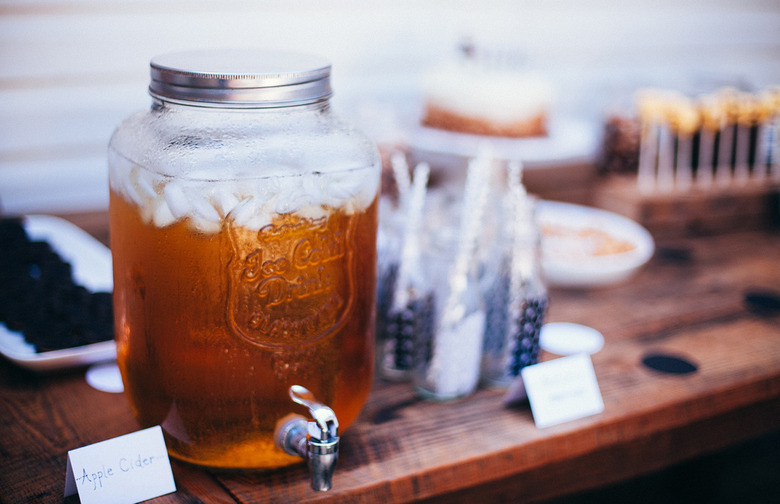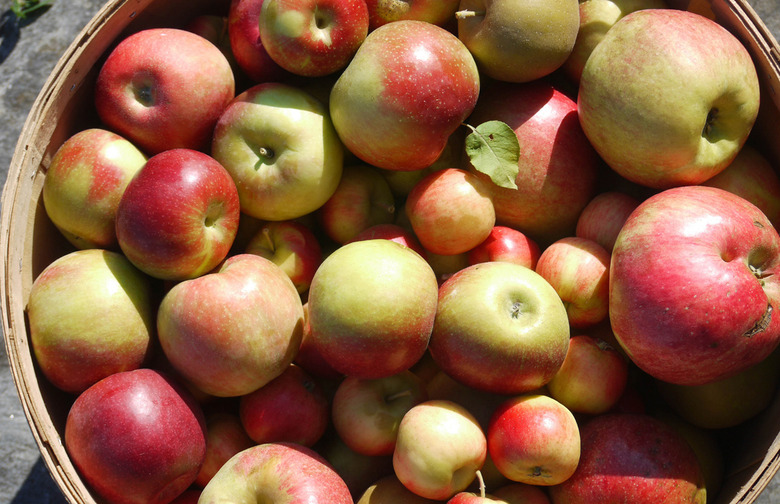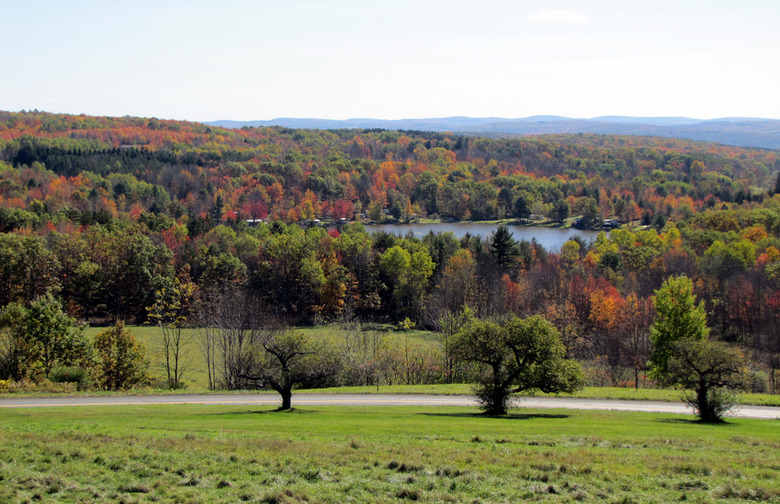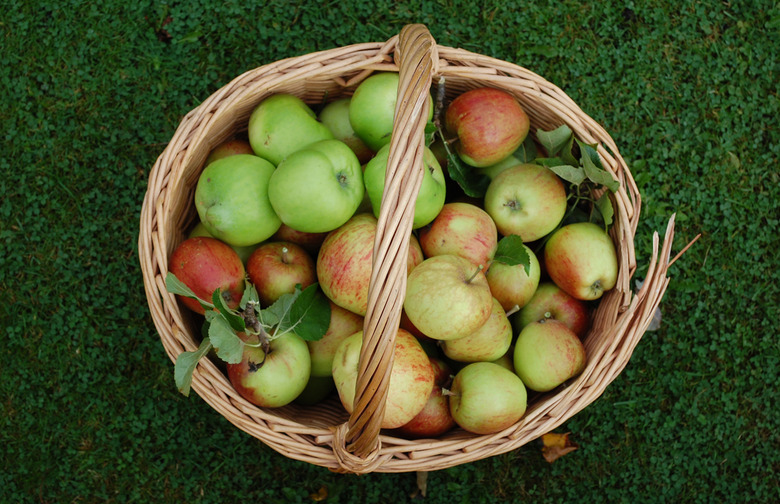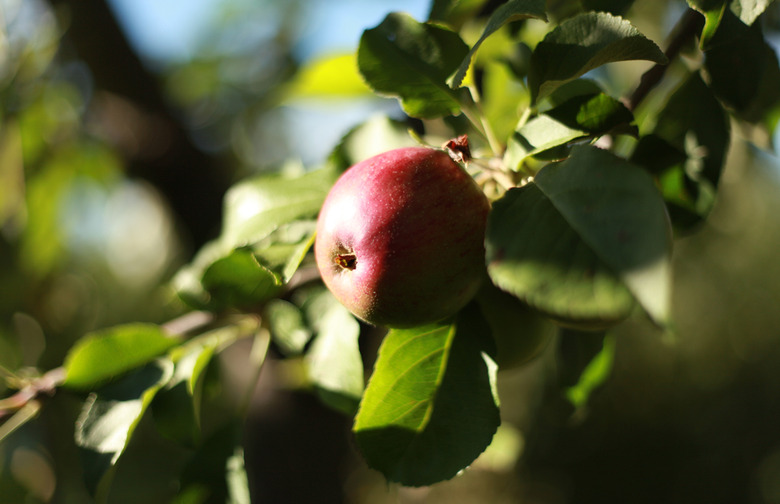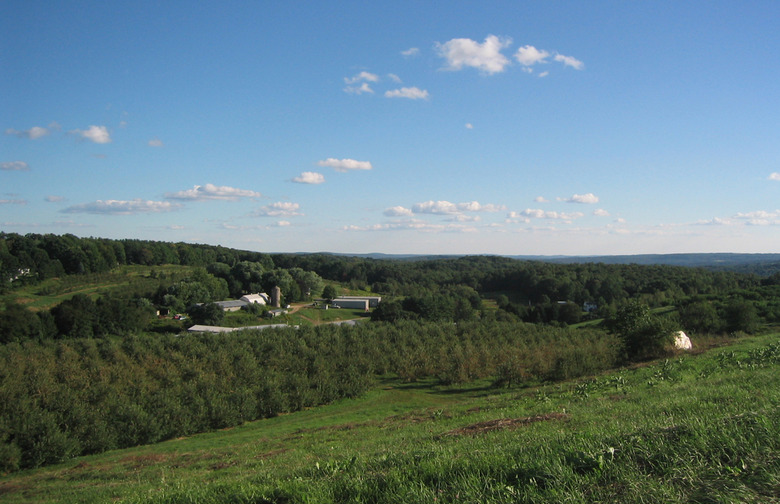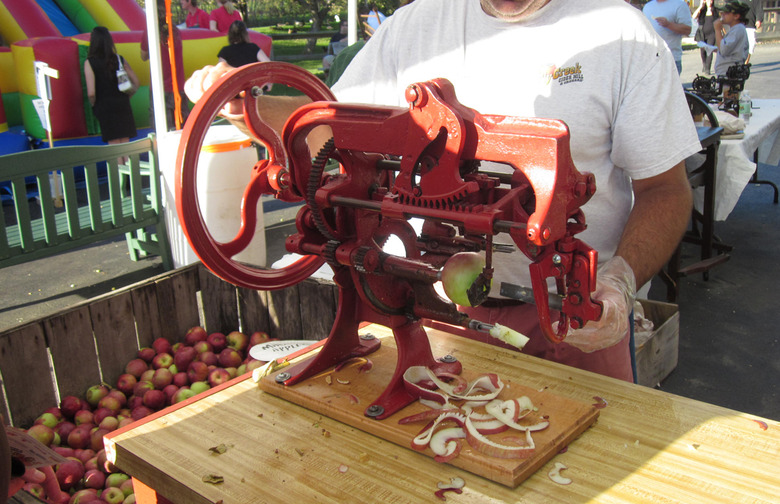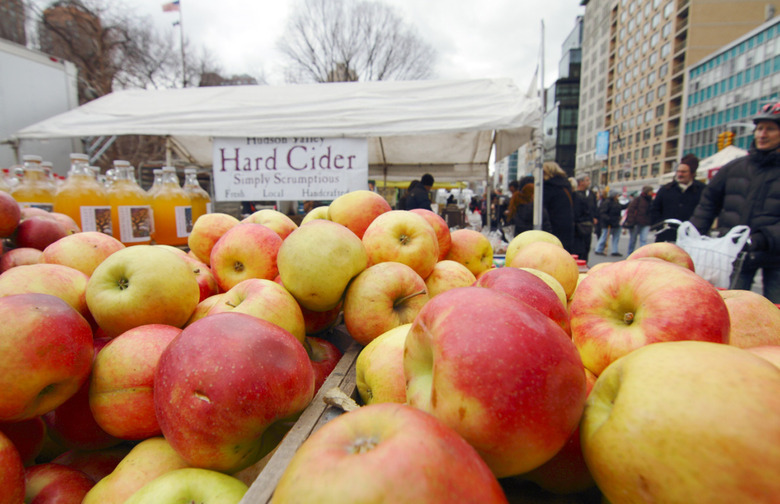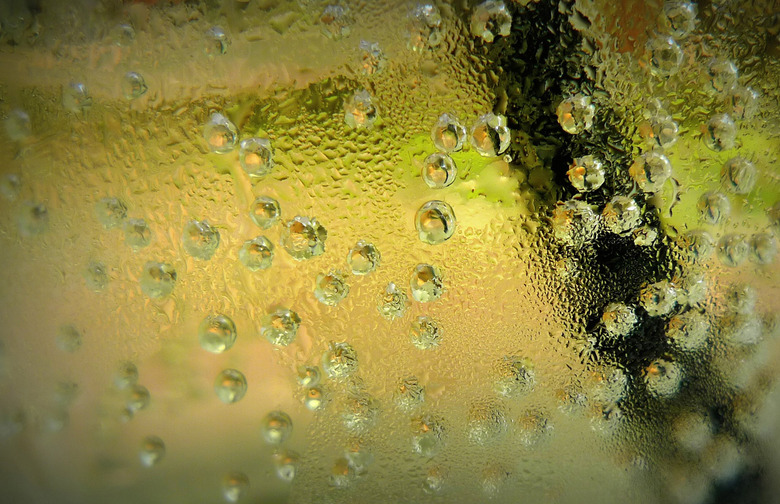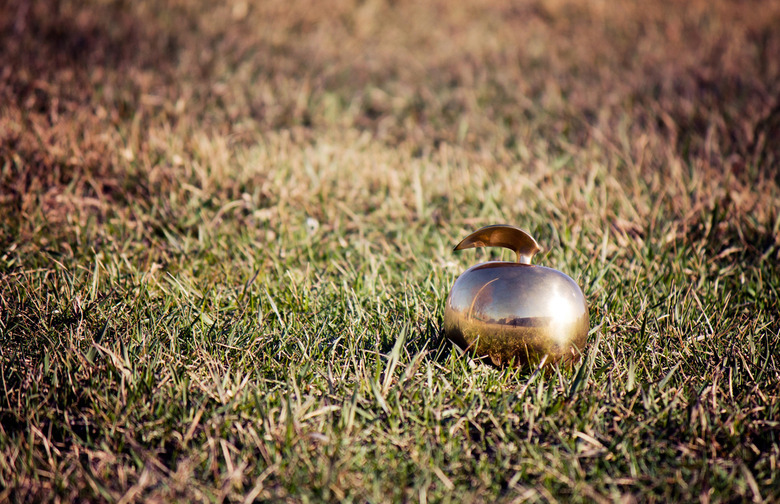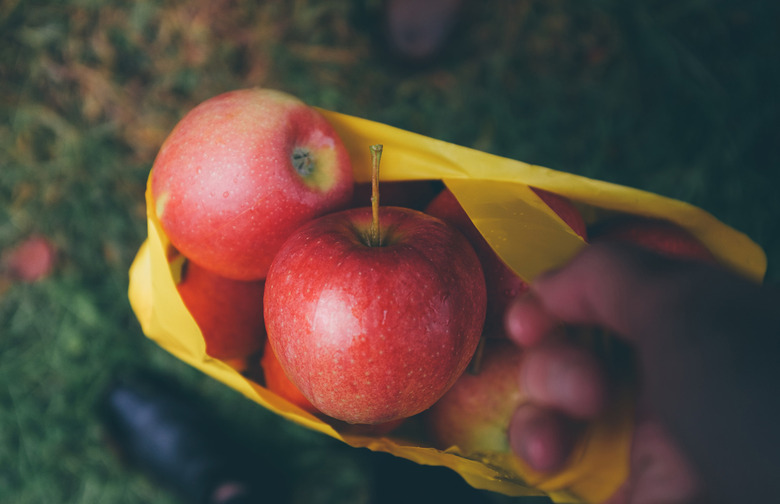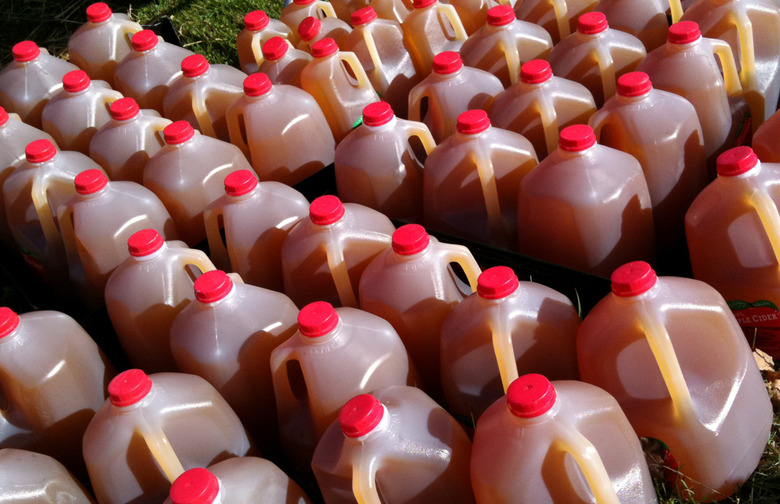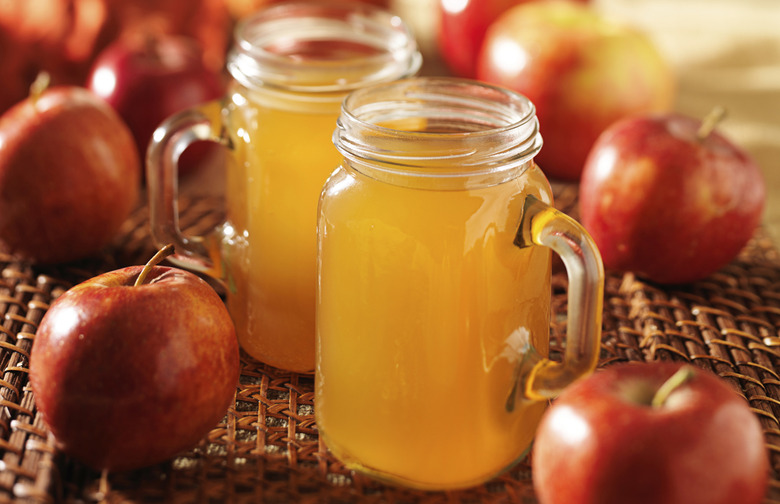Taste New York One Cider At A Time
There's a revolution going on in America and we're here to make sure you don't miss out. Funny thing is, the ruckus is about America's oldest libation — cider — and New York State is right in the thick of it. If you've been keeping up with our forays into the world of cider, you know that we're talking about the hard stuff here, not just apple juice, and it's huge in the beverage world right now.
New York's connection with the apple is more than just a city slogan: The state is the country's second largest apple producer and it has a history with cider that goes back centuries. As one of the original colonies, New York's been doing the cider thing since the birth of our nation, and until the one-two-punch of lager beer's dominance in the mid-nineteenth century, and cider's TKO by Prohibition in 1920, this fermented apple drink was the everyday tipple for the average American.
The Comeback Kid of Craft Beverages
Along the lines of everything old is new again, cider has made a huge comeback thanks to American imbibers' interest in craft beverages and sales figures bear this out. Nationally, cider is the fastest-growing category among alcoholic beverages sold in the U.S. and here are a few statistics that the craft beer and wine categories must be eyeing with envy:
- Since 2008, cider production has increased an average of 73 percent.
- In the two years between 2011 and 2013, cider production more than tripled, from 9.4 million gallons in 2011 to 32 million gallons in 2013.
- Sales of cider nationally hit 54 million gallons in 2014, which required 18 million bushels of fruit, or the equivalent of seven percent of the nation's total apple production.
It’s More Than Just a Bill
The good news for New York is the state is leading this trend. The impetus behind New York's impressive growth is linked primarily to 1) Governor Cuomo's support of forward-thinking state-sponsored initiatives aimed at increasing craft beverage production (including cider), and 2) the Governor's help with passage of the Farm Cidery Law in January of 2014.
The story of how a simple Farm Cider Bill changed the economy and tourism of New York seems unlikely, but its impact has been nothing short of spectacular, and according to Dennis Rosen, New York State Liquor Authority Chairman, "Under the Governor's leadership, we have partnered with cider makers to update antiquated regulations and outdated policies. The legislative and regulatory changes have helped spur remarkable growth by increasing marketing and sales opportunities, streamlining licensing, and loosening restrictions for the state's small cider manufacturers."
Read on for the quick sip on New York cider.
A Style for Every Palate
Just like wine, cider can express a range of sweetness levels (referred to as residual sugar or RS) from bone dry with no RS, to off-dry, and sweet, which can have as much as 10 percent RS. The ranges include dry, which is below 0.9 percent residual sugar; medium or off-dry or semi-sweet, which is 0.9 percent to four percent RS; and sweet, which is above four percent RS. What makes even the sweetest dessert-style ciders so refreshing to drink is the typical presence of steady acidity. And as in wine, aromas, mouthfeel, texture, body, weight, and taste, and flavors are not apply but more complex. Aromas and flavors can range from light and fruity, to earthy, barnyard-like, smoky, bacon-like, and much more.
Forget the Hops, Go for Fruit
For those whose tastes don't lean toward hoppy craft beers or wine-lovers in search of a lighter, lower alcohol alternative (8.5 ABV on average) to wine, apple cider is the ideal food-friendly drink you can consume every day. Cider has nothing in common with beer, so rather than lump it into the beer category, producers and experts think cider has more in common with its vinous cousin. Like wine, cider is a fermented fruit-based drink that prefers to struggle to produce the best juice; produces the highest quality, most vigorous fruit growth when select varietals are grafted onto stable root stocks; is finest when fruit and acidity are in balance; and expresses terroir in distinct ways a beer never can.
Go Local
The most authentic and enjoyable way to explore New York's incredible cider industry, especially those produced in limited quantities, is in situ. Make a trip out of your tasting tour and see all that the state has to offer. Cider houses, farm ciders, orchards, and gorgeous landscapes and mountain vistas are all part of the state's cider regions. Cider is made across the state; however, there are concentrations of cider producers in the central and eastern parts of the state, especially in the upper Hudson Valley and Finger Lakes regions. Use this handy interactive map to find them.
How a Bill Becomes a Cidery
From removing bureaucratic red tape that hampered small business growth to helping increase tourism and sales of cider and apples, the impact of initiatives and the Farm Cidery Bill has been nothing short of spectacular. As Governor Cuomo points out, "From offering tastings to selling their world-class product alongside other made-in-New York goods, our State's cideries are driving economic activity across the State, and I am proud that we have been able to play a part in their success."
New York’s Rocket Industry Is in Apples
Since 2011, the number of hard cider producers in New York has increased more than 480 percent, from five cideries in 2011 to 35 cider producers across the state. As a result of the Farm Cidery Bill, 16 of those cider producers are farm cideries and now 405 farm wineries and breweries are also permitted to manufacture cider, making it possible for New York to, in the short-term, dominate cider production.
Still Apple Juice Runs Deep
Forget any notions you have about sparkling cider and the stuff you give the kids on New Year's Eve. Cider can sometimes have a slightly hazy appearance and its carbonation levels range from perfectly still to a bright effervescence similar to the kind produced via méthode traditionelle produced in Champagne, France. While it's not good to have particles floating in your cider, some can lack brilliance and a mild effervescence is called petillant and more vigorous bubbles are called fully sparkling with a short-lived mousse.
There’s Gold in Them There Apples
Few states with a cider industry can boast the level of support New York — and the Governor — has given its cideries and regional tourism. Government actions have resulted in more than $16 million dollars to support industry growth and included the creation of a program within Empire State Development (ESD) focused on spurring growth and investment in craft beverages. Some of ESD's support has included:
- $6 million dollars in tourism promotion and marketing funds.
- $2 million dollars in direct spending to support the industry's growth through a $1 million targeted advertising campaign.
- $1 million dollars for a Craft Beverage Industry Tourism Promotion Grant Program.
- $2 million dollars for the Craft Beverage Marketing and Promotion Grant, a $2 million marketing grant program that matches $2 million in industry contributions for the marketing and promotion of New York produced wine, beer, spirits, and cider.
- $168,300 dollars for a tourism promotion grant to the Adirondack Regional Chamber of Commerce The Adirondack Craft Beverage Trail.
The State of the State’s Apples
With over 40,000 acres of apple orchards, New York is second only to Washington as the leading apple producer in America. In 2014, New York produced an estimated 1.26 billion pounds of apples, but quality is just as important as quantity and for the last 25 years the state has planted new and heirloom cider varieties to help diversify the varietal gene pool. This makes New York's apple industry the most diverse in the country and has helped encourage commercial growers like Black Diamond Farm, a farm-based cider house in Trumansburg in the Finger Lakes region, which grows 137 different varieties, most of which are heirloom apples.
What’s Old Is New Again
Some of the best cider apple varieties like Newtown Pippin, Northern Spy, Golden Russet, and Esopus Spitzenburg (Thomas Jefferson's favorite cider apple that sadly didn't grow well in Virginia) got their start in New York in the 1800s and continue to thrive, thanks to the state's ideal cider apple growing climate. Like their European counterparts, New York cider apples do best in regions with cool humid growing seasons and the local terroirs help produce mineral-driven aromatic ciders with optimal acidity levels.
You Can Taste New York
With Governor Cuomo as a booster, the New York cider industry has benefited from a plethora of craft beverage industry events and promotions that make it possible for trade, media, and consumers to learn first-hand just how wonderful native ciders are. They can get industry information from groups like the New York Cider Association and attend special events and annual celebrations like Taste NY; Cider Week New York City; the New York Wine, Beer, Spirits and Cider Summit; and edible Manhattan's Good Cider event.
